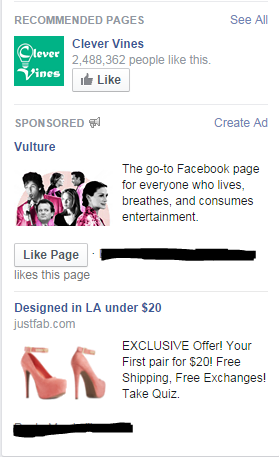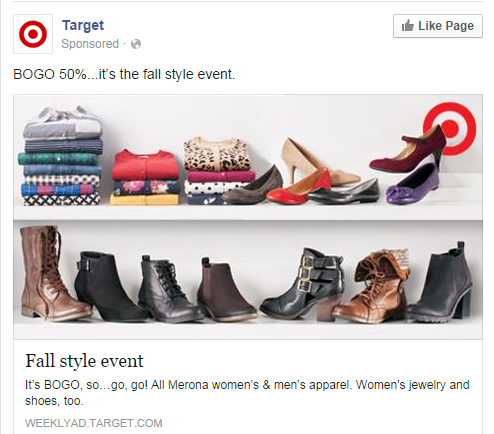* SPOILER-FREE POST *
It was Sunday when I started to think about this post, so naturally I was counting down the hours until the latest episode of AMC’s Breaking Bad. I logged into Facebook to help pass the time and as usual, the marketer in me picked up on a few ads. Which got me thinking:
…What if Walter White advertised his product on Facebook?
Luckily for Walt, Facebook made a big announcement in June of 2013 - they announced that they would be simplifying their 27 different ad units by the end of the year. This was a result of some feedback they received from marketers that many of their offerings were redundant in terms of what goals they could help achieve.
According to the announcement, this paring down effort will include automatically enabling Sponsored Stories rather than requiring advertisers to purchase them, increase consistency across ad units, and removing the Offer and Questions product options. Inside Facebook created a shiny infographic illustrating the various ad units, which makes understanding our options as advertisers a bit easier to digest.
If Mr. White were to setup an ad campaign on Facebook tonight, here’s what he would need to do:
Step 1: Identify Goals
Which Facebook ad type he will utilize for a specific campaign is dependent upon his goals, as well as what he is actually advertising on Facebook. Here are a few examples of things that Walt could advertise along with some likely goals:
- Advertising a Facebook Page: increase Likes or Promote page posts
- Advertising a Facebook Event: increase attendance
- Advertising a Facebook Application: increase Mobile and Desktop App users and App engagement

Get more information on Facebook's Goals and Objective options here.
Step 2: Choose an Ad Type and Create Your Ad
There are many Facebook ad types to choose from and they are dependent upon overall campaign goals. Two pretty common ad types include:
- Standard Facebook ads are commonly shown in the right-hand column and Newsfeed combined, or solely in the right-hand column. Users who click on these ads can be sent to a page within Facebook.com or an outside destination URL. You can choose an image along with a few lines of text to go along with the ad. The image cannot include more than 20% text and the copy of the ad includes a headline (25 characters) and body text (90 characters.)

- Promoted Posts are a way to get people to see your posts in their newsfeeds. The idea is that these will increase the likelihood that people will read your message, be aware of a business, or respond to discounts rather than if the post wasn't promoted. These ads show up on desktop and mobile newsfeeds with the label “sponsored.” When people like, share, or comment on your promoted post their friends will see this action. These posts are great for new product sales or promotions, as we’ve seen this have historically high interaction rates. You can choose to show it to people who like your page or people who like your page and their friends. You can promote posts as you’re creating them, or you can promote one that is already live (any post after June 21, 2012 can be promoted.)

Step 3: Choose an Audience
Walter White knows his audience, and Facebook makes it easy to reach those users (no pun intended) directly. You can target users based upon their precise interests, location, age, gender, activities, family status, musical genres, and more. You can also select audiences based upon whether they are or are not connected to any of your Pages, apps, or events.

Get more information on Facebook’s targeting options for mobile and desktop here.
Step 4: Pricing
Next, WW needs to:
- Select if his ads will run on a daily or lifetime budget a. To set a daily budget, select 'Per Day' when setting up your ads. b. Select 'Lifetime Budget' to have your ads paced across a specific time period until they hit your specified budget.
- Choose a bidding option a. You can choose to be charged on a CPM or CPC basis. You can then view the cost of your ads in real time.
Get more information on Facebook’s cost and budgeting here.
Step 5: Be Sure to Test
Walt would never release his product without having someone test it first, and he should run his ad campaign the same way. Running multiple versions of his ad will allow him to test images and copy and determine which resonates best with his specific audience.
- Make sure to test one part of the ad at a time so you can see which change impacted your results.
- Facebook automatically allocates more of your daily budget to higher performing ads, so you may need to put single ads in their own campaigns in order to “force” Facebook to allow you to test evenly. Set up this way, you’ll be better able to test, optimize, gauge performance, and ultimately pick a winner.
You don’t need to have a Facebook page to start advertising, and some ad units are so easy to implement that even Badger could do it. It’s pretty easy to get started, so get cooking!

